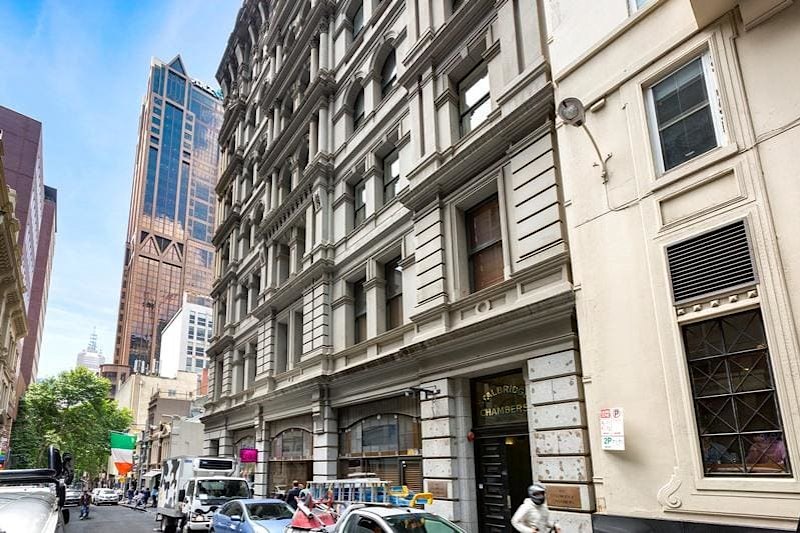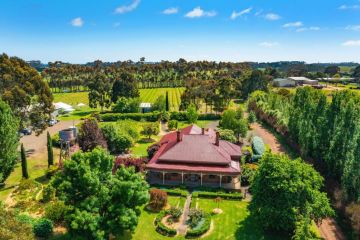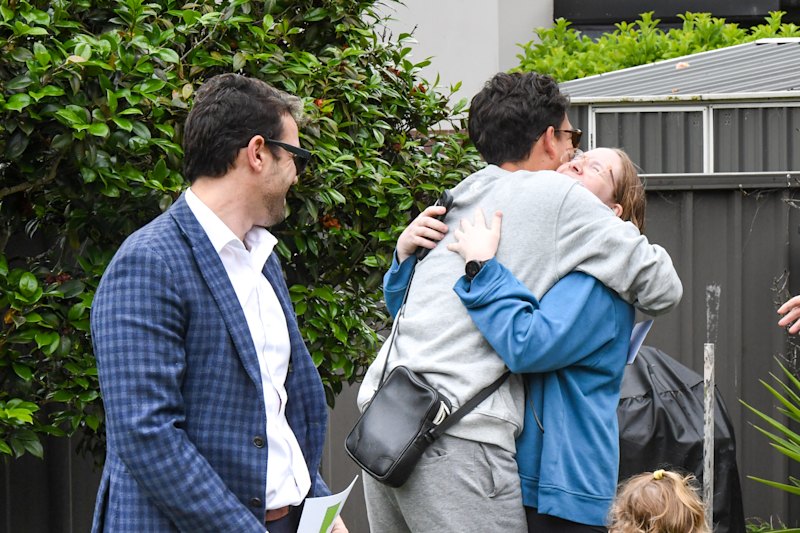Community unites to build home in three weeks to raise money for cancer research

Hundreds of Newcastle tradies picked up the tools on Monday to build a home in 21 days to raise hundreds of thousands of dollars for childhood cancer research.
The house, which will be built in The Bower estate in Medowie, will see an entire community come together to donate resources — land, bricks and furnishings — and volunteer their time to the Build For A Cure campaign.
In its fourth year, the campaign has raised more than $2 million for the Children’s Cancer Institute. Once the home is finished, it will be auctioned with all proceeds donated to financing further research. Each $100,000 funds one researcher for a year and it’s vital to their research discoveries and treatment of children.
“This is truly a partnership between science and the community where the community funds are critical to making sure we can deliver our programs and platforms to the benefit of every child with cancer,” said Professor Michelle Haber, executive director of the institute
It is funding the work of 200 researchers at the institute who are in the ultimate race against time to save children’s lives – and they are making a difference.
The research team is part of the $58 million Zero Childhood Cancer program, which hopes to beat childhood cancer by throwing out the one-size-fits-all approach of chemotherapy and personalising the treatment for each child. And they’ve made serious inroads to achieving their mission of reducing cancer deaths in children.
More than 100 Australian children with cancer, who have a less than 30 per cent chance of survival, have been part of a three-year clinical trial since it kicked off last year. More than 60 per cent have received recommendations for personalised treatments.
Researchers have worked around the clock in the Sydney laboratory, testing each child’s tumour sample against hundreds of drugs to determine the most effective medication for each patient.
They have also enlisted the help of powerful computers; what once took weeks now happens in a matter of hours using robotic technology to find the best potential treatments for each child, according to Professor Haber.
While the researchers can’t reveal study results just yet, targeted treatment plans have made a difference with children alive today who would not have survived otherwise.
The institute’s mantra “is not if, it’s when we cure childhood cancer” according to Professor Haber. “It’s simply a matter of time now.”
Growing up as a child in the 1950s, Professor Haber said a child’s cancer diagnosis was “a death sentence”. Now eight out of 10 children survive because of a multi-disciplinary approach – combining chemotherapy, radiotherapy and surgery – developed over the years.
Professor Haber believes her team is on track to closing the gap completely because of her game-changing plan of personalising cancer treatments for children using revolutionary technological advances and translating that into clinical care for each patient in a short time frame.
“Scientists around the country, all working together, led here in Sydney to a new model of care, a new way of treating children that doesn’t involve one doctor, with a limited amount of knowledge, trying to make a decision about how to treat a child that’s relapsing and dying of a disease,” Professor Haber said.
“I do feel proud that we’ve created this national network where our children with cancer are now able to have, absolutely, a world-class approach to their treatment,” she said.
Dr Frank Alvaro is a paediatric oncologist at Newcastle’s John Hunter Hospital and has collaborated with the Zero program since it began.
“Zero is focusing on those who have a poor chance of a cure. But our long term aim is to bring this research into front line treatment of those children who have a relatively good chance [of survival] but to reduce the side effects of chemo and to have better outcomes,” Dr Alvaro said.
“This is a big deal – this could change the way we treat children’s cancer. At the moment the study is designed to provide some hope by providing extra therapy for cancers that come back,” he said.
“But in the future, we hope to include this in every child’s treatment. I’m very hopeful this is the start of a revolution in how we treat cancer in children,” he said.
We recommend
States
Capital Cities
Capital Cities - Rentals
Popular Areas
Allhomes
More







